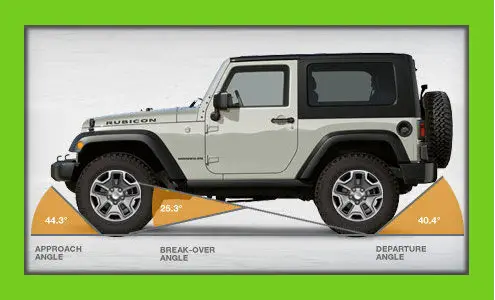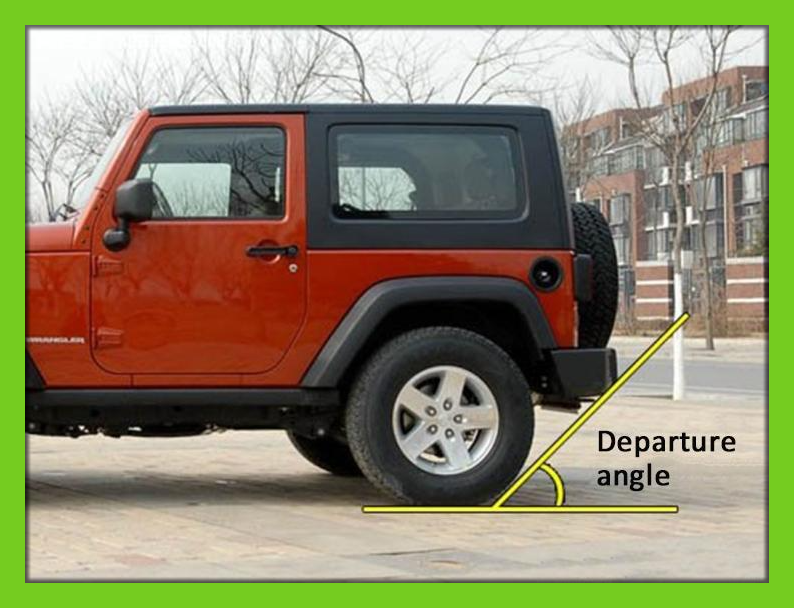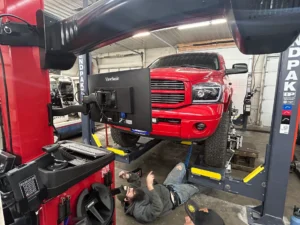Mastering Off-Road Trails
Off-roading is an exciting journey that brings drivers closer to the untamed, ever-changing beauty of the great outdoors. It can push both the vehicle and the driver to their limits, demanding skill and patience. One of the most crucial technical aspects that every off-road enthusiast should grasp is the approach and departure angles. These angles play a critical role in determining how well a vehicle can tackle rough, uneven surfaces without being damaged. We explore what approach and departure angles are, why they’re essential, and what steps you can take to optimize them for the ultimate off-roading experience.
What Are Approach and Departure Angles?

Approach Angle
The approach angle is defined as the steepest angle a vehicle can climb or descend without any part of the front of the vehicle hitting the terrain. This angle is measured from the bottom of the front tire where it meets the ground to the lowest point at the front of the vehicle, typically the bumper. A larger approach angle allows an off-road vehicle to tackle steeper inclines and obstacles, such as rocks and logs, without the risk of front-end damage.
Departure Angle

Similarly, the departure angle is the steepest angle at which a vehicle can descend or leave an obstacle without the rear of the vehicle making contact with the obstacle. This angle is measured from the bottom of the rear tire where it meets the ground to the lowest point at the back of the vehicle, typically the rear bumper. A generous departure angle is essential for safely exiting steep declines and obstacles without causing harm to the vehicle’s rear.
Why Are They Important?
Critical for several reasons:
Vehicle Protection: These angles ensure that the vehicle’s front and rear ends do not collide with the terrain. Good angles can prevent damage to critical components such as the bumper, exhaust, and suspension system.
Enhanced Capability: Vehicles with better approach and departure angles can navigate more challenging obstacles. This allows drivers to explore more rugged and demanding trails.
Safety: Optimizing these angles reduces the risk of getting stuck or causing a vehicle rollover.
How to Improve Approach and Departure Angles for Off-Roading
Improving your vehicle’s approach and departure angles can significantly enhance its off-road capability. Here are some strategies to achieve this:
Lift Kits
Installing a lift kit raises the vehicle’s body and/or suspension, increasing ground clearance. This modification directly improves both the approach and departure angles by elevating the lowest points at the front and rear of the vehicle.
Bumper Modifications
Replacing stock bumpers with aftermarket off-road bumpers can significantly improve approach and departure angles. Aftermarket bumpers are often designed with a higher clearance in mind, allowing for steeper angles without the risk of contact.
Larger Tires
Upgrading to larger tires not only increases ground clearance but also effectively improves the approach and departure angles. Larger tires will move the lowest point of the bumpers higher, relative to the ground.
Skid Plates
While skid plates do not directly improve approach and departure angles, they offer added protection for the undercarriage when navigating obstacles that might exceed your vehicle’s angles. They are an essential addition for any off-roading enthusiast looking to push their vehicle to its limits.
Understanding and optimizing the approach and departure angles of your off-road vehicle is crucial for navigating challenging terrains safely and efficiently. By focusing on these angles, you can enhance your vehicle’s performance, protect it from damage. This will ensure a safer, more enjoyable off-roading experience. Whether you’re a seasoned off-roader or a newcomer eager to explore the wild, mastering the art of approach and departure angles is a fundamental step on the path to off-roading excellence.





